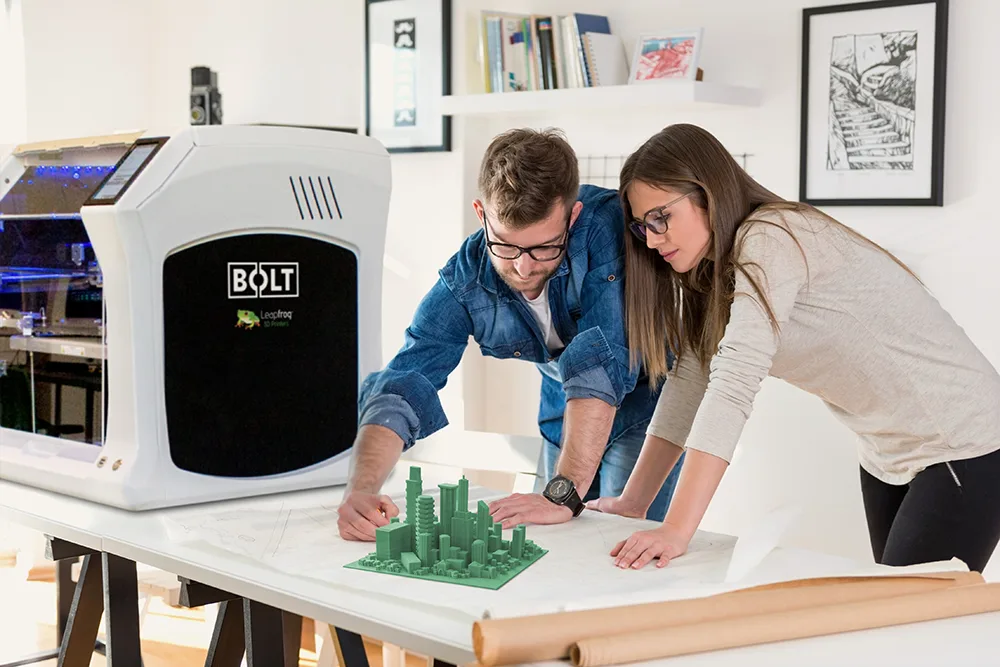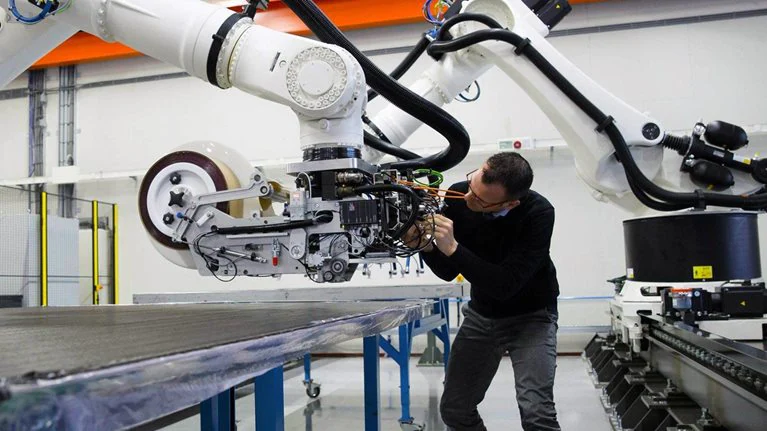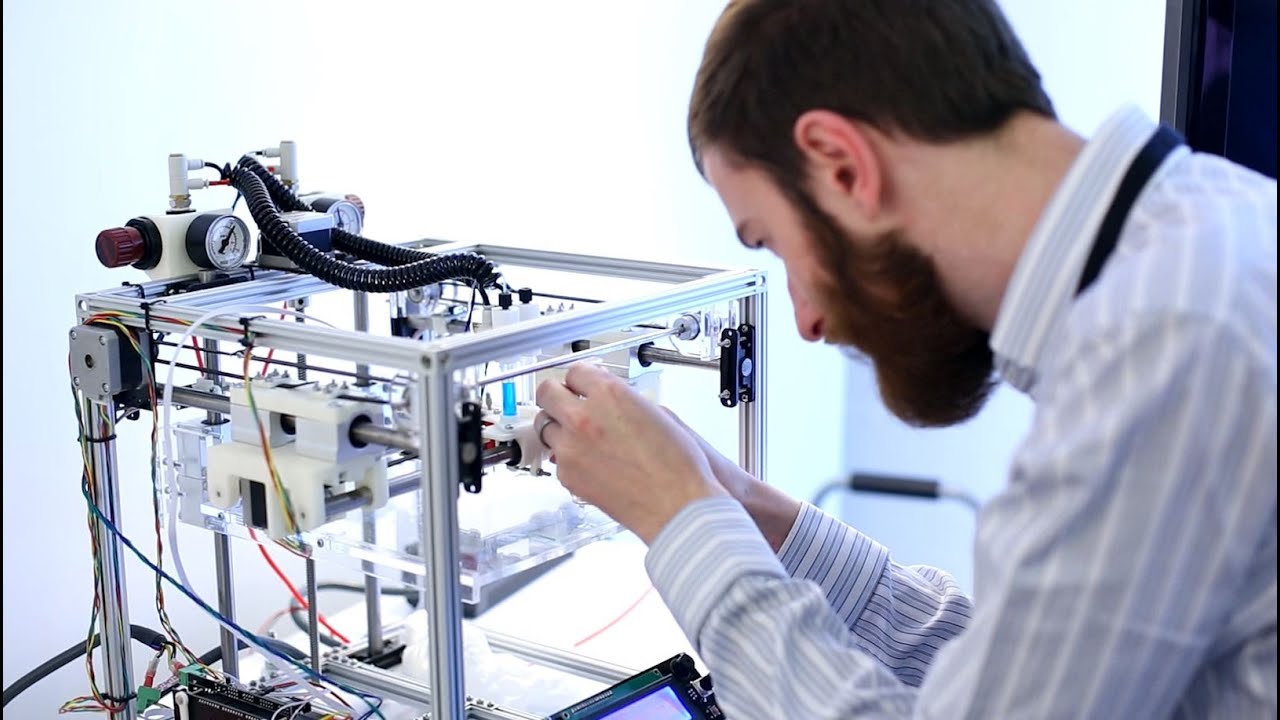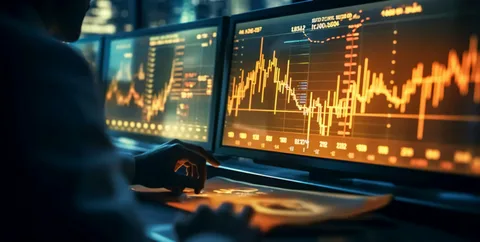Technology
How 3D Printing Is Reshaping the Future of Manufacturing

The Revolution in Manufacturing Is Here
For decades, traditional manufacturing has been at the heart of numerous industries, including automotive, aerospace, and healthcare. While effective, the standard processes—machining, molding, and assembly—often involve time-consuming production cycles, high costs, and limited customization options. Enter 3D printing.
This groundbreaking technology, also known as additive manufacturing, is redefining how products are designed, produced, and delivered. By building objects layer by layer, 3D printing minimizes material waste, shortens production timelines, and unlocks new possibilities for customization and creativity.
The question isn’t whether 3D printing is going to change manufacturing—it already has. Instead, it’s about understanding how its rapid evolution is influencing global industries and what this means for businesses of all sizes. Whether you’re an entrepreneur, an engineer, or simply curious about the tech world, this post will walk you through the implications, benefits, limitations, and potential future of 3D printing in the manufacturing landscape.
Industries Transformed by 3D Printing

Image by Yandex.com
While 3D printing can and does make an impact across nearly every industry, a few key sectors are already leveraging its game-changing potential.
Healthcare
From prosthetics to surgical tools, the healthcare industry has embraced the customizability of 3D printing. One of the most revolutionary applications? Printing organs and tissue. Companies like Organovo are spearheading the creation of bio-printed living tissues for research and, eventually, transplantation. Dental professionals, too, are benefiting, printing custom braces, molds, and crowns quickly and efficiently.
Aerospace
The aerospace industry demands precision. 3D printing allows companies like GE Aviation to manufacture lightweight, highly complex engine parts with unparalleled accuracy. By reducing the weight of components, fuel efficiency improves, environmental impact decreases, and overall costs drop.
Automotive
Additive manufacturing is making waves in the automotive world, particularly in rapid prototyping and custom parts production. For example, Ford uses 3D printing to develop prototype parts in days, not months, which has significantly accelerated its design and production process. Niche sectors, such as motorsports, are also utilizing the technology to create highly customized performance-driven components.
Consumer Goods
Companies like Adidas and Nike are using 3D printing to create small-run footwear collections, focusing on customization and ergonomic designs. These products were once impossible to produce with traditional methods but are now achievable, cost-effective, and eco-friendly.
Why Businesses Are Investing in 3D Printing

Image by Yandex.com
1. Reduced Costs
Traditional manufacturing methods often involve extensive tooling and setup costs—especially for small production runs. With 3D printing, businesses can eliminate many of these expenses. For example, creating molds for injection molding can cost thousands, but in additive manufacturing, initial design files are all you need to begin production at a fraction of the cost.
2. Speed and Agility
Gone are the days of waiting months for product revisions or retooling processes. 3D printing enables rapid prototyping, allowing businesses to test and refine their products in days rather than months. This reduction in lead time translates into faster innovation and quicker responses to market demands.
3. Customization
From personalized consumer products to industry-specific components, 3D printing provides unparalleled levels of customization. Businesses can now offer tailor-made solutions without the additional costs traditionally associated with bespoke manufacturing.
4. Minimized Waste
Unlike subtractive manufacturing, where materials are removed through cutting or grinding, additive manufacturing builds layer by layer, using only the necessary material. This not only reduces waste but also increases sustainability—a critical consideration for many businesses today.
Case Studies of Impactful 3D Printing Applications
1. Prosthetics in Developing Countries
Volunteer organizations like e-NABLE use 3D printing to create low-cost prosthetic hands for children in developing countries. The cost? Just $50 per hand compared to thousands through traditional means.
2. Aerospace Advancements by Airbus
Airbus has incorporated over 1,000 3D-printed parts into its A350 XWB plane. These components have reduced production time and overall aircraft weight, leading to fuel savings and a reduction in CO2 emissions.
3. Nike’s Performance Footwear
Nike’s Vapor Laser Talon, a football cleat designed for optimal speed on the field, was created using 3D printing. By bypassing traditional manufacturing techniques, Nike was able to produce a lightweight, performance-driven design unavailable through traditional methods.
Current Challenges and Limitations
Despite its many benefits, 3D printing isn’t without challenges.
1. Material Constraints
While significant progress has been made, the range of materials that can currently be used in 3D printing is still limited. Industries requiring highly specialized materials may find this restrictive.
2. High Upfront Costs
Although long-term savings are significant, the initial investment—particularly for industrial-grade 3D printers—can be prohibitive for smaller businesses.
3. Scalability Issues
3D printing excels in small-batch prototypes and production but may struggle to match the efficiency and cost-effectiveness of traditional mass manufacturing processes for very high-volume production.
4. Intellectual Property Concerns
With digital design files being shared and recreated easily, ensuring designs remain secure and protected has become a growing concern.
The Future of 3D Printing in Manufacturing
The next decade promises exciting advancements in 3D printing technology and applications.
1. Material Advances
Research is underway to expand material options, including bio-based and recyclable alternatives. This will unlock opportunities for industries like fashion, construction, and beyond.
2. Integration with AI
AI and machine learning will further optimize 3D printing processes. From predicting structural weaknesses to automating design improvements, the synergy between AI and 3D printing will redefine what’s possible.
3. Distributed Manufacturing
Imagine a world where products are designed in one country, digitally transmitted across the globe, and produced locally within hours. This model of distributed manufacturing, enabled by 3D printing, could disrupt global supply chains and reduce production-associated emissions.
Tips for Businesses Looking to Leverage 3D Printing
New to 3D printing? Here’s how to get started.
- Start Small: Begin by identifying areas where 3D printing can make a measurable impact, such as prototyping or low-volume production.
- Consult Experts: Work with experienced 3D printing providers or consultants before investing in machinery and resources.
- Invest in Training: Ensure your team is equipped with the knowledge needed to operate and design for 3D printing effectively.
- Explore Partnerships: Partner with established 3D printing firms to explore its potential without committing significant capital upfront.
3D Printing Is Shaping the Future, One Layer at a Time

Image by Yandex.com
It’s clear that 3D printing isn’t just a passing trend—it’s a revolutionary force reshaping industries and redefining possibilities. From healthcare to aerospace, its impact is undeniable, and we’re only at the tip of the iceberg.
For businesses ready to innovate, 3D printing offers a path toward improved efficiency, higher ROI, and greater adaptability in a rapidly evolving market. Are you prepared to take your manufacturing processes to the next level?
Technology
NVIDIA GeForce GTX 1060 Mobile: Portable Gaming
Business
Trade Data: Unlocking Global Trade Success with Trusted Partners

Finding Trusted Partners: The Role of Trade Data in Global Business
In the vast landscape of global commerce, one of the greatest challenges businesses face is identifying trustworthy partners. Even if you have an exceptional product or a solid business strategy, success often hinges on connecting with reliable buyers and sellers.
Without the right partners, your business journey can become slow, confusing, and stressful.

This is where it steps in as a crucial yet often overlooked ally. Operating quietly in the background, trade data enables you to uncover verified importers and exporters.
It’s not complex; it simply records who is buying, who is selling, and the dynamics of these transactions. Armed with this information, you can make informed decisions, steer clear of untrustworthy entities, and focus on building strong business relationships.
In this article, we’ll delve into how trade data simplifies the process of identifying international partners, using clear examples to illustrate its effectiveness.
Toward the end, we will introduce Siomex, a dependable source of trade data that provides clean and useful information for importers and exporters alike.
The Importance of Verified Partnerships
Consider this scenario: You have a product you want to export overseas. After browsing online, you stumble upon a potential buyer who reaches out with an enticing offer. Their communication seems friendly and their proposal appealing, but how can you determine if they’re genuine? Are they a reputable company? Will they pay on time?
Many businesses encounter similar dilemmas. Partnering with unverified entities can lead to delayed payments, incorrect orders, and even financial losses. This underscores the need to vet potential importers and exporters, and makes this process straightforward and secure.
Trade Data: Your Business Map
Think of trade data as a navigational map guiding you through the complexities of international trade. When embarking on a journey, a map directs you along the correct routes, helping you avoid pitfalls. Likewise, trade reveals the path to suitable business partners.
This map provides vital information, such as:
- The countries where specific products are in demand.
- The established players in your target market.
- How frequently these companies buy or sell.
- The volume of goods they handle.
- Connections they have with different countries.
By leveraging this basic yet comprehensive information, you can validate the legitimacy and activity level of potential buyers or sellers.
Discovering Verified Importers and Exporters with Data
1. Observe Real Buying and Selling Activities
Let’s say you are in the business of selling eco-friendly cotton bags, and your goal is to find a buyer in Europe. By accessing trade data, you can examine which companies have recently purchased cotton bags, how many they bought, and from whom. This allows you to bypass uncertain contacts and focus on actual buyers already engaged in the product market.
This approach is similar to peering into a store before stepping inside; if you notice customers actively shopping, you feel more confident about making a purchase.
2. Confirm the Existence of a Company
The internet is rife with deceptive companies promoting enticing offers. However, it allows you to investigate whether a company genuinely conducts business. If you find no record of their buying or selling activities, you can quickly deduce that the company may not be legitimate. This insight gives you the confidence to protect yourself from potentially harmful dealings.
3. Identify Experienced Buyers
Every seller prefers to work with buyers familiar with their product type. If you are marketing spices, you’ll be keen to collaborate with buyers who consistently engage with spice vendors. Trade data enables you to pinpoint who is actively trading in your product category, saving you time and allowing you to foster enduring relationships.
4. Understand Volume Requirements
Companies have varying purchasing habits—some buy bulk quantities while others order in smaller amounts. Trade data informs you of these patterns, enabling you to tailor your proposals accordingly.
For example:
- If a buyer typically orders 500 units per month but you cannot meet that demand, it might not be worth pursuing.
- Conversely, if another buyer usually orders 50 units and you can supply 500, you may be able to make a compelling offer that aligns with their needs.
Understanding the volume dynamics improves your chances of a successful transaction.
5. Know Their Operating Territories
If your goal is to export goods to the Middle East, trade data reveals which companies are consistently importing products from your country or neighboring regions. Partnering with these companies can streamline your export process since they are already acquainted with relevant regulations and timings.
Saving Time and Money with Trade Data
Without the insights offered by trade data, you could waste countless hours sifting through online information, sending emails, and making calls with minimal results. Many of these efforts may lead you nowhere.
Trade data allows you to focus exclusively on verified entities, significantly reducing wasted time while accelerating your growth.
Enhance Your Market Understanding
Beyond connecting you with potential partners, trade data provides insights into current market trends. You can identify which products are gaining traction, who is buying more in specific regions, and how demand shifts over time. This understanding assists in making strategic decisions for your business.
An Example for Clarity
Let’s consider Rohan, a candle maker in India looking for buyers in the United States. Despite spending days researching online, he struggles to find genuine leads. Many prospects respond, but Rohan is unsure of their legitimacy.
By acquiring trade data from a trustworthy provider like Siomex, Rohan uncovers crucial insights:
- Names of U.S. companies that have purchased handmade candles recently.
- Their buying patterns over recent months.
- Typical quantities they order.
- The vendors from whom they have previously purchased.
Equipped with this knowledge, Rohan can confidently reach out to these companies, knowing the potential buyers are active and familiar with the product. This simple action positions him to grow his business while reducing unnecessary risks.
Why Choose Siomex for Trade Data?
Siomex is committed to supporting importers and exporters by providing accurate and user-friendly trade data. Businesses rely on Siomex for its emphasis on accuracy and simplicity, ensuring that users can easily identify genuine buyers and sellers without confusion.
Here’s why Siomex stands out:
- Comprehensive information presented in an intuitive format.
- Data sourced from a variety of countries.
- Clear buyer and seller listings.
- Daily updates to keep you abreast of current market conditions.
- A straightforward dashboard that caters to beginners.
- A dedicated support team to assist you.
Whether you’re searching for new partners or laid plans for market entry, Siomex empowers you to make informed decisions swiftly and effectively.
Tips for Making the Most of Your Trade Data
To maximize the benefits of trade data, consider the following tips:
- Check Recent Activity: Focus on companies with the most recent transactions, indicating they are active in the market.
- Match Product and Quantity: Prioritize reaching out to companies that deal in your type of product and similar volume.
- Craft a Simple Introduction: Introduce yourself, your business, and the mutual benefits of a partnership concisely and warmly.
- Track Market Trends: Utilize trade data to monitor changes in demand for your product by region, allowing for timely adjustments in strategy.
- Opt for Trusted Sources: Choose reliable data providers like Siomex to ensure your search is effective and secure.
Final Thoughts
Accessing trade data simplifies the task of identifying trustworthy importers and exporters. It serves as a guide, steering you away from unverified companies while revealing genuine partners. In an ever-evolving business environment, where finding credible connections is essential, this data acts as your valuable ally.
Siomex is a key player in this space, offering clear and actionable. Many businesses utilize it to discover buyers, sellers, and new opportunities worldwide.
If you’re eager to trade confidently and expand your business, start leveraging trade data today. This invaluable tool will save you time, reduce stress, and propel your venture forward.
Frequently Asked Questions
What is trade data?
It encompasses fundamental information regarding the exchange of goods between countries, detailing who buys, who sells, what products are involved, and the frequency of these transactions.
How does trade data help in verifying importers and exporters?
It reflects the true activity levels of companies, revealing what they are buying, how much they purchase, and their sourcing countries. This visibility is vital in finding reliable partners.
Why should I use Siomex?
Siomex offers transparent, up-to-date, and easily digestible trade data, guiding you toward genuine buyers and sellers without confusion. Many businesses trust its reliability.
Can beginners utilize trade data?
Yes! With an intuitive platform like Siomex, beginners can access clean and understandable trade information.
Does trade data matter to small businesses?
Absolutely. Trade data enables small businesses to bypass time-consuming and risky searches, connecting them with verified global partners efficiently.
Care
Coding Automation: Revolutionizing Healthcare for Efficiency

This is precisely where medical coding automation tools are stepping in to transform the industry, enabling healthcare providers to streamline their operations and optimize revenue outcomes.
It’s no longer enough to simply manage coding tasks with traditional methods. Accuracy, speed, compliance, and efficiency have climbed to the forefront of essential requirements, yet a surprising number of healthcare organizations still rely on manual coding processes that are riddled with opportunities for human error and delays.

Medical coding constitutes a highly intricate discipline, encompassing thousands of codes from the CPT (Current Procedural Terminology), ICD (International Classification of Diseases), and HCPCS (Healthcare Common Procedure Coding System) systems. Coders must navigate frequent regulatory updates and adhere to extensive documentation requirements.
In the absence of automation, coding teams find themselves investing countless hours in manually scrutinizing charts, interpreting clinical documentation, and assigning precise codes.
However, digital transformation is changing this narrative; it’s fostering a new era of efficiency and accuracy that enhances the healthcare coding process like never before.
The Importance of Medical Coding Automation
Healthcare providers are under constant pressure to minimize claim denials, hasten reimbursements, and ensure compliance with a landscape filled with perpetually changing regulations.
This is where the advent of automated medical coding proves to be a game changer. By harnessing advanced technologies such as artificial intelligence (AI), machine learning, and natural language processing, automation tools can swiftly analyze patient records and identify clinical patterns, all while accurately assigning codes without the need for human intervention.
One of the most significant advantages of these automation tools is their capacity to handle repetitive tasks, such as CPT code automation.
This allows healthcare coders to redirect their efforts towards more complex or ambiguous coding scenarios rather than getting bogged down in routine, rule-based activities. The result? A substantial boost in productivity and accuracy that directly benefits revenue generation and operational efficiency.
Enhancing Accuracy and Compliance Through Automation
Healthcare organizations often find themselves asking, “What exactly is the benefit of automation in medical coding?” The answer is straightforward: enhanced consistency.
Manual coding processes run a higher risk of yielding inconsistent coding decisions and documentation discrepancies. Conversely, automated systems adhere to standardized logic, guaranteeing uniformity in code assignment every time.
Moreover, medical coding automation significantly mitigates the discrepancies that commonly lead to denied claims. By aligning coded data with clinical documentation effectively, automation works to prevent non-compliance issues and minimizes audit risks.
These sophisticated tools are capable of extracting relevant data, interpreting clinical terminology, and matching it to appropriate CPT or ICD codes—all within mere seconds.
Automation is also a boon for coding teams overwhelmed by backlogs of charts. With greater consistency and speed at their disposal, coding teams can deliver more accurate claims, resulting in streamlined submissions and quicker reimbursements.
The Connection Between Automation and Revenue Cycle Management
When discussing coding automation, one cannot overlook its direct link to billing processes. The integration of automation in medical billing ensures that charges, documentation, coding, and claims processing remain in sync throughout the revenue cycle.
This seamless alignment eradicates many of the bottlenecks that typically delay reimbursements.
Healthcare organizations are progressively transitioning towards systems where automated medical coding is the focal point of their entire digital transformation strategy.
The more tasks that are automated within coding and billing processes, the fewer errors and delays healthcare providers will encounter.
Furthermore, automation lightens the administrative load, empowering physicians, coders, and billing staff to concentrate on higher-value tasks. Instead of spending excessive amounts of time resolving claim denials, these teams can proactively develop strategies aimed at enhancing long-term financial performance.
AI’s Role in the Future of Medical Coding Automation
The landscape of coding automation is inextricably linked to advancements in artificial intelligence. Cutting-edge AI tools are capable of understanding clinical notes, recognizing medical terminologies, and applying the proper coding guidelines with incredible accuracy.
This new chapter in medical coding—driven by the capabilities of AI—offers a level of precision and flexibility previously unseen in the industry.
AI’s ability to learn from expansive datasets facilitates ongoing improvement. As documentation styles evolve and medical terminology expands, these AI models adapt, ensuring they remain reliable long-term solutions.
Moreover, the concept of automation within medical coding is gaining traction among healthcare leaders. With surging patient volumes, staff shortages, and a maze of escalating regulatory requirements, automation is shifting from being a luxury to a necessity.
Achieving Efficiency Through Comprehensive Coding Automation
For healthcare organizations in search of a scalable and trustworthy solution, automated coding tools are indispensable. These tools simplify repetitive tasks, minimize manual intervention, and offer real-time feedback to coders.
Instead of being preoccupied with data entries or code lookups, coding teams can dedicate their efforts to analyzing more complex cases, thereby affirming overall coding integrity.
What sets these tools apart is their capacity for seamless integration with Electronic Health Records (EHR) and billing systems, supporting end-to-end coding automation. This integration assures a fluid transition of data from clinical documentation to the final claim submission.
With the advancement of automated medical coding systems, healthcare organizations can expect:
- Reduced turnaround times for claims
- Fewer coding errors overall
- Higher acceptance rates for claims
- Enhanced productivity among coders
- Decreased operational costs
These improvements not only elevate revenue cycle management but also enrich the quality of patient care. By enabling clinicians and staff to devote more time and attention to patients rather than administrative hindrances, healthcare providers can foster a more patient-centered environment.
Conclusion
Medical coding automation transcends being merely a trend; it forms the backbone of a more efficient and financially robust healthcare system.
As it enhances accuracy, streamlines workflows, and fortifies revenue cycles, automation becomes vital for healthcare organizations navigating modern complexities. With the continuous evolution of AI and machine learning, the capabilities of coding automation will only amplify, reshaping the future of medical coding and billing indefinitely.
If your healthcare organization is prepared to modernize its coding processes, enhance operational efficiencies, and strengthen financial performance, reach out to Exdion Health today. Embrace the future of coding with automation that works for you.
-
Business2 years ago
Cybersecurity Consulting Company SequelNet Provides Critical IT Support Services to Medical Billing Firm, Medical Optimum
-
Business2 years ago
Team Communication Software Transforms Operations at Finance Innovate
-
Business3 years ago
Project Management Tool Transforms Long Island Business
-
Business2 years ago
How Alleviate Poverty Utilized IPPBX’s All-in-One Solution to Transform Lives in New York City
-
health3 years ago
Breast Cancer: The Imperative Role of Mammograms in Screening and Early Detection
-
Sports3 years ago
Unstoppable Collaboration: D.C.’s Citi Open and Silicon Valley Classic Unite to Propel Women’s Tennis to New Heights
-
Art /Entertainment3 years ago
Embracing Renewal: Sizdabedar Celebrations Unite Iranians in New York’s Eisenhower Park
-
Finance3 years ago
The Benefits of Starting a Side Hustle for Financial Freedom
































